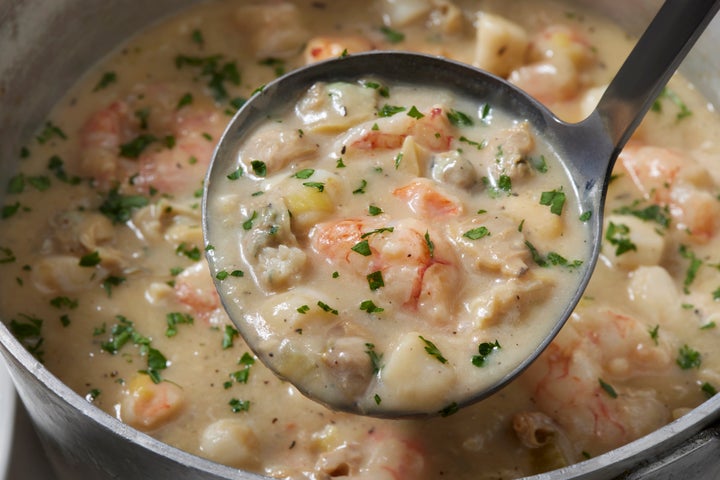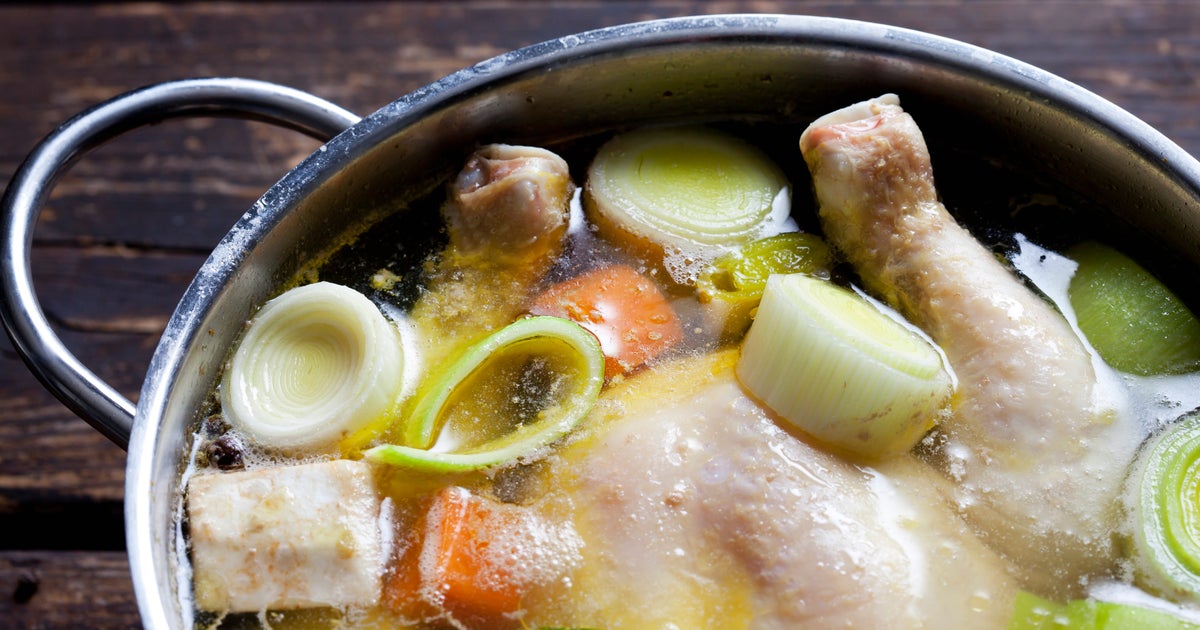[ad_1]
Whereas studying a soup recipe or watching a chef make a batch of rooster noodle on TikTok, you will have seen an instruction urging you to make use of a spoon or a mesh strainer to “skim” foam from the highest of the soup pot.
However what’s the purpose of skimming? Is the “scum” that floats atop simmering soup actually that unhealthy? And do all forms of soup have to be skimmed, or is it OK to go away out that step generally?
We spoke to skilled cooks, culinary educators and meals scientists to get solutions to those questions, simply in time for peak soup season.
Why is skimming really useful?
“Scum, in reference to soup skimming, is mostly the coagulation of protein particles held together with fat,” defined McKenzie Johnson, a chef-instructor on the Auguste Escoffier College of Culinary Arts who teaches a category referred to as Foundations of Soup-Making. “Some of this protein clumps up more depending on your ingredients, causing small chunks to rise, but most of it remains a conglomerate of film and even foam that rises to the top at the simmering process.”
Skimming these particles off the highest is principally “for cosmetic purposes,” defined Bryan Quoc Le, a meals scientist. The scum “just doesn’t look great in a soup,” Le mentioned.
Along with the visible influence, Johnson advised us that “it’s important to skim the scum early in the simmering process if you don’t want to have any unwanted mouth feel or flavor affecting your outcome. If you don’t skim the scum before it rapidly boils, it can drop back into the soup.”
Is the scum that floats to the highest of the soup suitable for eating?
Whereas the scum can cloud a broth and customarily look unappetizing, meals scientist Brian Chau of Chau Time assured us that these fat and proteins received’t pose any menace to well being.
“Skimming the scum is not a food safety issue. If there is some scum left over, the soup is still consumable,” Chau mentioned. “Flavor is subjective to each person, and some people may like the proteins floating on top. People can try a soup with and without the scum and make the call. Home cooks can save time by not skimming.”

LauriPatterson by way of Getty Photographs
Do all forms of soup have to be skimmed?
As Chau defined, soup skimming isn’t really obligatory. Don’t wish to skim? That’s tremendous! However all of our consultants acknowledged there’s one kind of soup that tends to reap extra benefits from skimming: broth-based soups like pho, vegetable soup and even rooster noodle soup.
“Skimming is most important in the case of clear broths or soups, since the scum can make the soup look cloudy,” mentioned Jessica Botta, a chef-instructor on the Institute of Culinary Training.
In case you’re apprehensive that skimming the fats and proteins from a brothy soup will compromise its taste, Johnson has a useful suggestion: Clear the scum from the highest “and then control the fat shape and flavors” by including a drizzle of olive oil or perhaps a pat of chilly butter.
On the subject of thicker and extra substantial soups, skimming has much less of an impact on the aesthetics, however it will probably nonetheless be a worthwhile step. Anthony Sitek, the chef and proprietor of Crown Restaurant Group in Cincinnati, Ohio, advised us that skimming a soup “like beef bourguignon or even French onion will give you a slightly less greasy mouthfeel.”
Even cream-based soups could profit from a fast skim. “I made a batch of clam chowder every day for a couple of years while working in a restaurant,” Johnson mentioned. “I’ll say one thing for sure: While I wasn’t too worried about skimming scum, I was concerned about the thick film that can form on top [of a creamy soup] as it cools. The film can become dense particles that get pushed into the soup and form concentrated flavors and unwanted textures. This can happen with any cream-based soup, so you want to keep a close eye on it, and if the film is too thick, consider skimming it off completely rather than trying to mix it in.”
This story was beforehand revealed at an earlier date.
[ad_2]
Supply hyperlink

